Step by Step
OK, let’s work through the chord, one finger at a time:
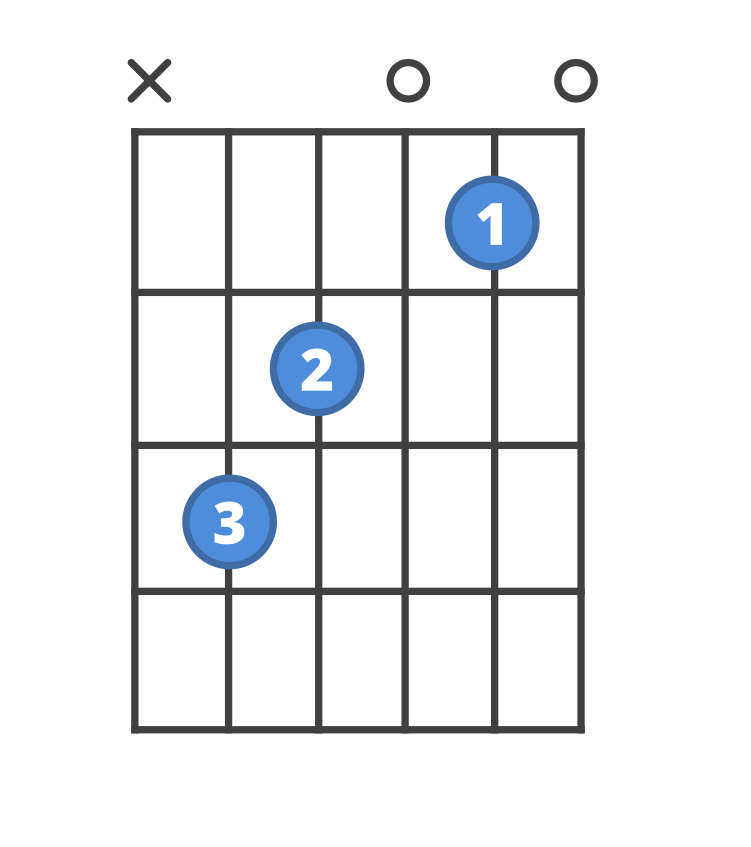
Can’t read this? Learn how to read chord diagrams here
Step One
First, take your first finger on the first fret of the second string. Remember: the order of the strings goes from the thinnest to the thickest.
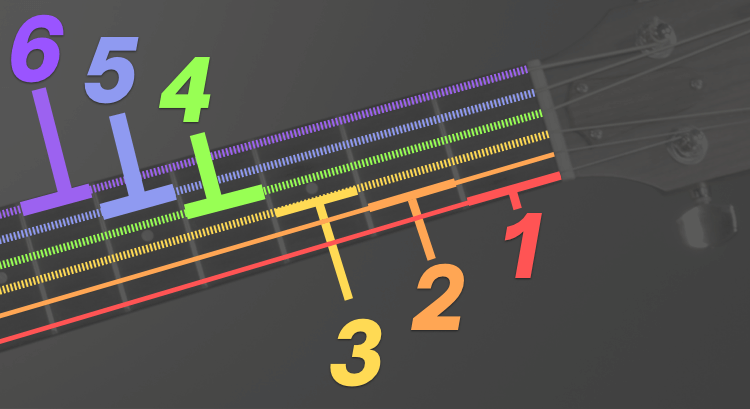
And when we say second fret, we don’t mean on the second fret itself, we mean in the space just behind it, closer to the headstock of the guitar.
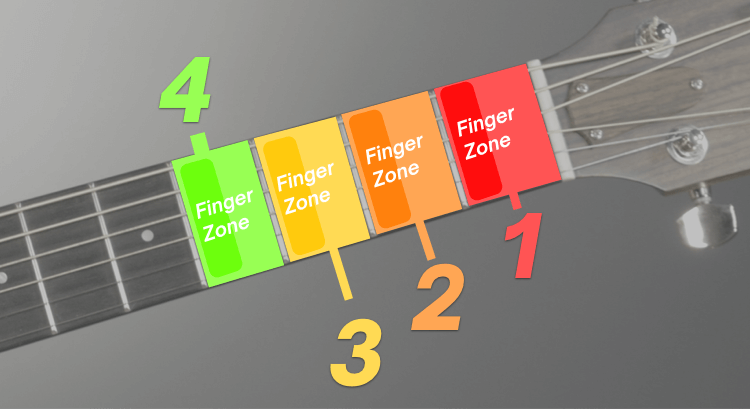
Using the two diagrams above, you’d be putting your first finger on the orange string in that orange finger zone. Like this:
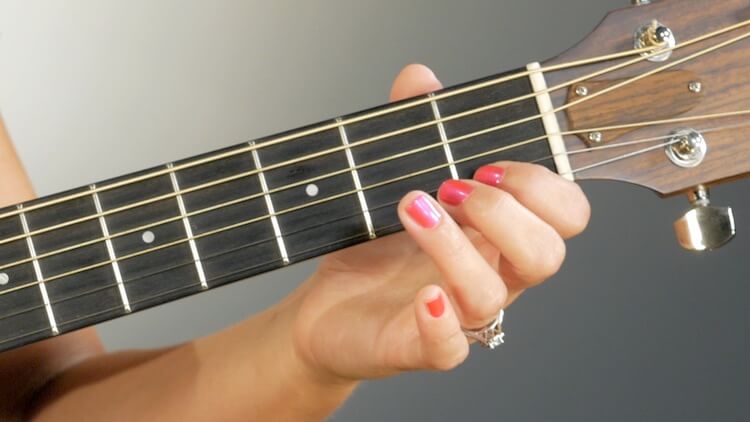
One Chord a Day: How to master the most important guitar skills in just 14 days
15 Lessons
Step Two
Put your second finger on the second fret of the fourth string.
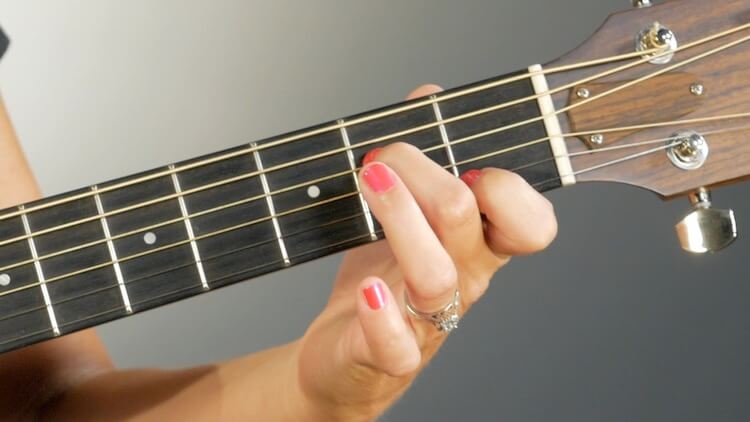
Pause for just a second. Notice anything about that second finger? Anna has her finger curved really nicely, up and over the first three strings, so she’s pushing down on the fourth string with just her finger tip.
This will help her get a nice, clean sound out of her C major chord.
Step Three
Next, put your third finger on the third fret of the fifth string.
This might be a little bit of a stretch, but keep at it.

Notice how Anna is stretching up as far into the finger zone as she can reach. Getting closer to the fret will mean she doesn’t have to push down quite so much to stop the string from buzzing.
Step Four
Some chords, you strum all the strings. Some chords you don’t.
For this chord, you’ll only be strumming the thinnest five strings.
Place your pick, or your thumb, on the second thickest string, and strum down to play all the rest. Do not play the thickest string, and you’ll be all set.
The One Finger C Chord
When you’re just getting started, playing chords can feel like doing gymnastics with your fingers. It’s important that you start playing guitar, the very first day you pick it up.
Here’s an easy, one-finger version to help you get started.
It has all the same notes as the more common version, but the sound isn’t quite as rich or as full.
All you need to do is put your first finger on the first fret of your second string, and then strum the thinnest three strings. That’s it!




